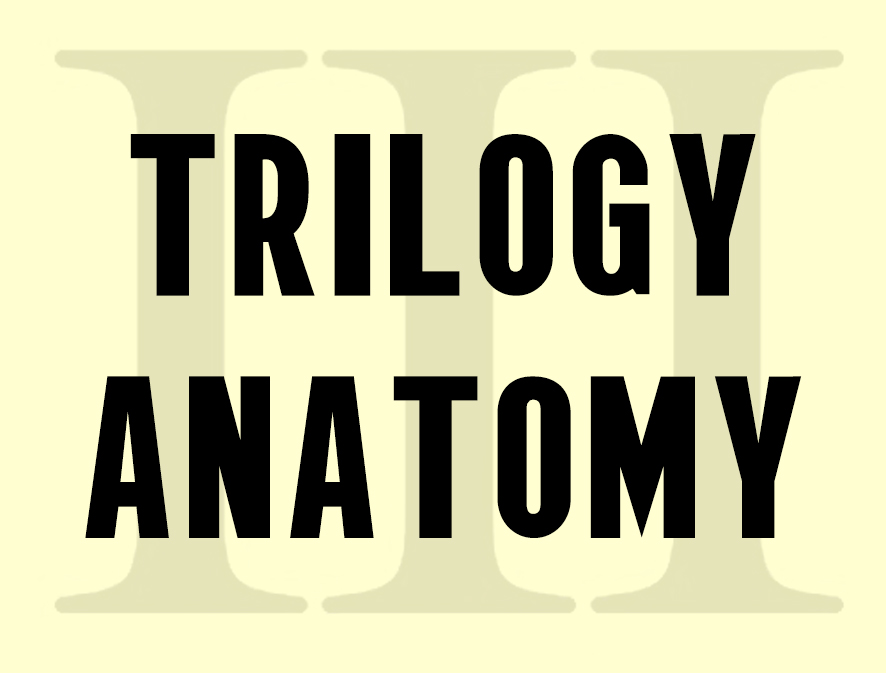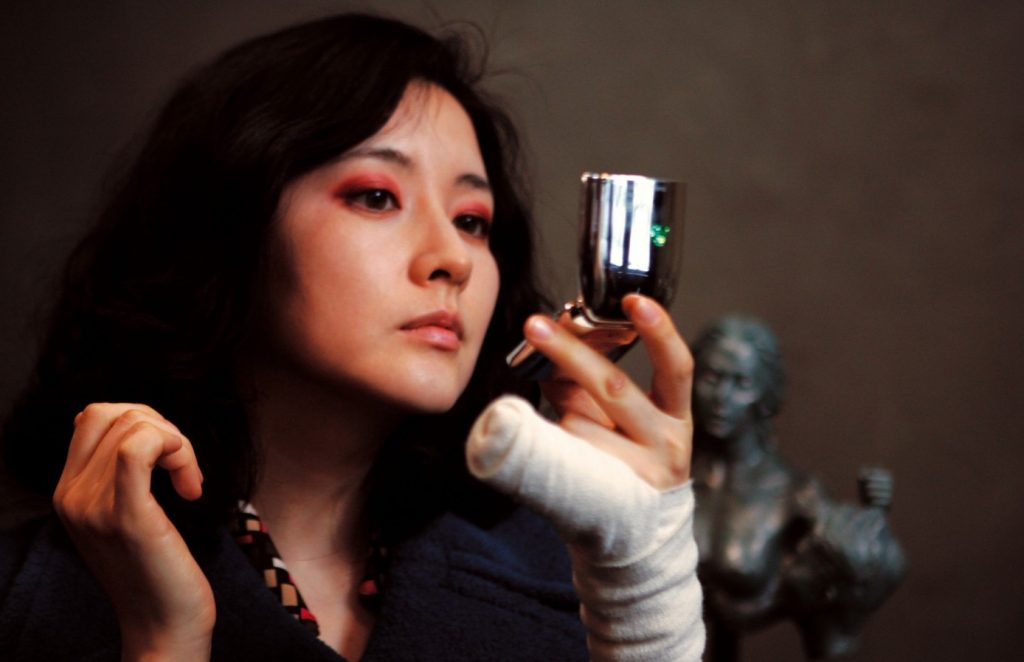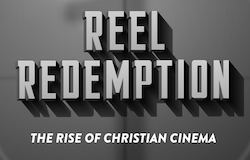Trilogy Anatomy: Lady Vengeance, by Tober Corrigan
2 Jun
Upon being asked after the release of the Dark Knight if he had a third installment planned, Christopher Nolan replied with asking ironically how many good third movies there were. Of course, Nolan eventually did complete his trilogy, whether it being against his better judgment or not depending on who one talks to. Throughout movie history, the essential functions of the third film in a series have either been as a fitting and satisfactory end to a particular storyline (Lord of the Rings: Return of the King), a disappointing but nevertheless conclusive entry (Godfather III), or a debacle so big as to necessitate a reset to the franchise (Superman III/Spiderman 3, etc., etc.). In anticipation of another highly-anticipated third film, War for the Planet of the Apes, this weekly series will cover famous third films, infamous third films and otherwise, exploring how trilogy-enders or other types of third films have functioned in relation to its series.
Sometimes the best trilogies come in the strangest packages. This is certainly true for Park Chan-Wook’s self-proclaimed Vengeance Trilogy. Though not connected in any conventional narrative sense, the three films do contain enough cross-references, callbacks, and through lines to back the director’s claims. Principal actors in one film reappear in the next in a minor role, accentuated in ways meant to evoke their other screen selves within Chan-Wook’s universe. Certain visual tricks get re-introduced with each film, seemingly inconsequential objects in the first film become iconography by the third. What these connections mean in and of themselves are at first hard to read.
Of course, the very substantive center upon which these arguably superficial similarities orbit is the title theme: vengeance. All three films in the trilogy (Sympathy for Mr. Vengeance, Oldboy, Lady Vengeance) explore quite explicitly (if the titles of the films don’t already give this away) the role of vengeance in the lives of its characters. While there is nothing original about a topic that dates all the way back to the ancient Greeks, Chan-Wook uses his three film template to find exciting entry points into humanity’s rather obsessive, and dare it be said, cosmological relationship to vengeance. In this director’s hands, vengeance is a guiding light and a character in its own right, becoming ever more complex as the trilogy continues.
So one of the crowning virtues of Lady Vengeance comes in its ability to conclude, or answer, the vengeance theme started by Mr. Vengeance and Oldboy. The common mantra uniting Lady Vengeance’s two predecessors is that vengeance never provides lasting satisfaction. In Mr. Vengeance, revenge is sought by Park-Dong Jin after his former employee, Ryu, kidnaps and accidently murders his daughter. Just after Jin sees the vengeance through, he too is brutally attacked by a terrorist group avenging the death of one of their brethren at Jin’s hands. Oldboy’s entire storyline consists of Lee Woo-Jin’s convoluted and extensive plan to enact the ultimate vengeance on Oh Dae-Su for a past misdeed. Yet Woo-Jin questions what he has to live for after his plan was completed, eventually killing himself to end any persistent miseries. Vengeance is cyclical and all-consuming in the first two movies, leaving no one untouched. The laudable commitment of the films to not take sides, or to take all sides, is undercut by its simplistic political “commentary” in Mr. Vengeance and its tenuous plot construction in Oldboy.
Lady Vengeance improves on both by offering a way out of the vicious cycle. Its story, like Oldboy, follows the lengthy execution of a plan of revenge. This time the perpetrator is Lee Geum-Ja, a woman forced to 13 years of imprisonment for a kidnapping and murder she did not commit. She goes after the real killer from the moment of her conviction, making key alliances with prison inmates that she knows will later pay off once she’s out. By film’s end she gets her revenge in just the way she’d hoped, but instead of being punished for this act by her own hand or someone else’s, the conflict and discontent comes from within her. Geum-Ja’s long-lost daughter becomes both a key subplot and the character that provides a possible antidote to the easy cynicism of the first two films. It is the daughter who asks her mother why, even in the face of the facts, she believes there to be justification in killing a killer. The last shot is of Geum-Ja’s daughter holding her grieving/confused mother as the snowflakes, symbolizing some bizarre kind of Chan-Wook-ian purity, floating around them. Lady Vengeance’s final word to a three film-long conversation is definitive, perhaps even hopeful if one brings that capacity to it.
Whether this trilogy’s shifting relationship to vengeance is indicative of the journey Chan-Wook himself took while making these is anyone’s guess, but they do definitely reveal a burgeoning and ever-specified interest in the supernatural and religious to explain the vengeful motives of the characters. Mr. Vengeance deals with the spiritual only peripherally. In one of the lighter scenes can be heard a Korean rendition of “Come Thou Fount” drifting in and out. Oldboy largely avoids any specific spiritualism, weighed down by its attempt to justify its own bizarro world and mythos. Hypnosis is the closest it gets to a higher power.
But it is Lady Vengeance that tackles the religious head-on. The film opens with a Korean church chorus greeting Geum-Ja’s return to civilian life, only to be rudely rejected. The church’s leader offers Geum-Ja a slab of white tofu, the ingestion meant to symbolize the born again life, free of sin. It’s rather humorously portrayed and makes one immediately believe they’re in for a thrashing of South Korean evangelical Christian culture. Yet, by film’s end, the white tofu becomes a motif returned to, with Geum-Ja offering her daughter white cake, having it offered back to her, poignantly refusing, and finally sticking her head full into the cake, sobbing and desperate for the symbolic power suggested by those Korean Christians. This time the notions of religious purgation are not related to spite or hilarity, but to a deep conviction that she is sinful and up against the abyss—beyond saving—a point the film continually makes and uses as a counter-point or complement to the vengeance narrative. Chan-Wook’s invocation of Christian dogma can be seen as a bold step forward for this film series not so much for the specific religion chosen but because Chan-Wook attempts to provide some kind of causal explanation for the universal desire for justice and the violent but inadequate means of attaining it.
The ethical maturity that Lady Vengeance uses to round out the trilogy is only slightly hampered by its erratic aesthetic choices. Despite being helmed by one of the most inventive cinematic minds we have, one of the great missteps of the trilogy as a whole, and of Lady Vengeance in particular, is in the lack of visual conformity. As mentioned earlier, Mr. Vengeance keeps things grounded in a gritty realism, using non-diegetic music only in sparing measures. There are moments of Chan-Wook’s later distinctive flourish, but it is ultimately reigned in and more reminiscent of Tarantino-lite quirkiness than of frame-to-frame auteurism. Oldboy is completely unlike that first film, following its own manic visual logic down a rabbit hole of flash-flood editing, pulpy music cues, and often-inexplicable (though often later explained) moments of hysteria and hallucinations. Lady Vengeance looks and feels a lot more like Oldboy than Mr. Vengeance, and yet it doesn’t seem to be able to fully inhabit its own world in the same way Oldboy did. Not only does the film lack a bravura moment to match the one-take hallway fight, it often feels unsure of itself. The film takes strange detours from its main plot, including digressions that feel confusing rather than edifying. Chan-Wook oddly opted for excess experimentation rather than polish for the trilogy-capper. Another bold move, though this time not so successful. Merits and demerits equal each other out to make for a third film more intellectually satisfying than anything. There’s much to explore and analyze in this trilogy, if one is willing to endure the inconsistencies.





No comments yet